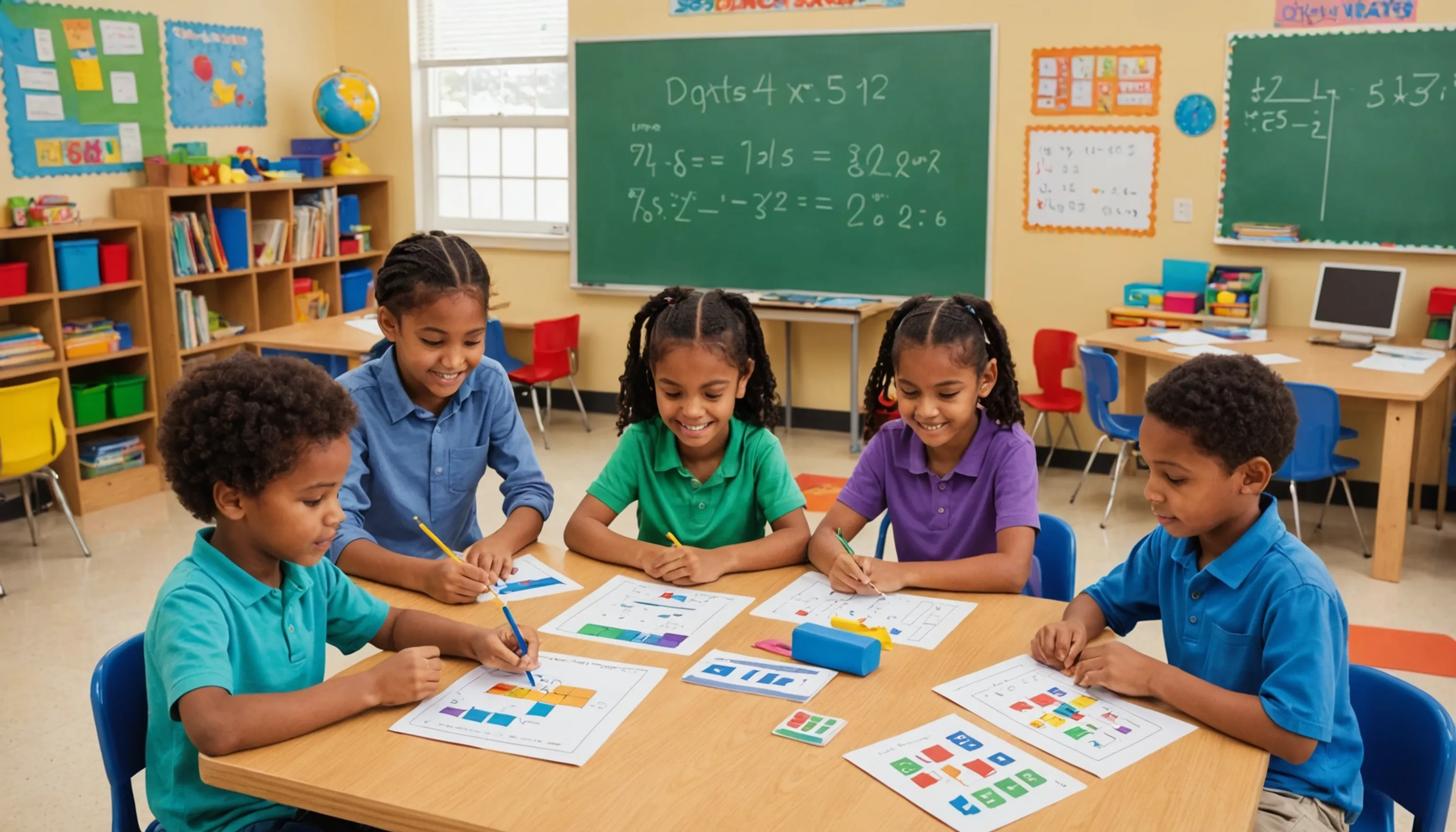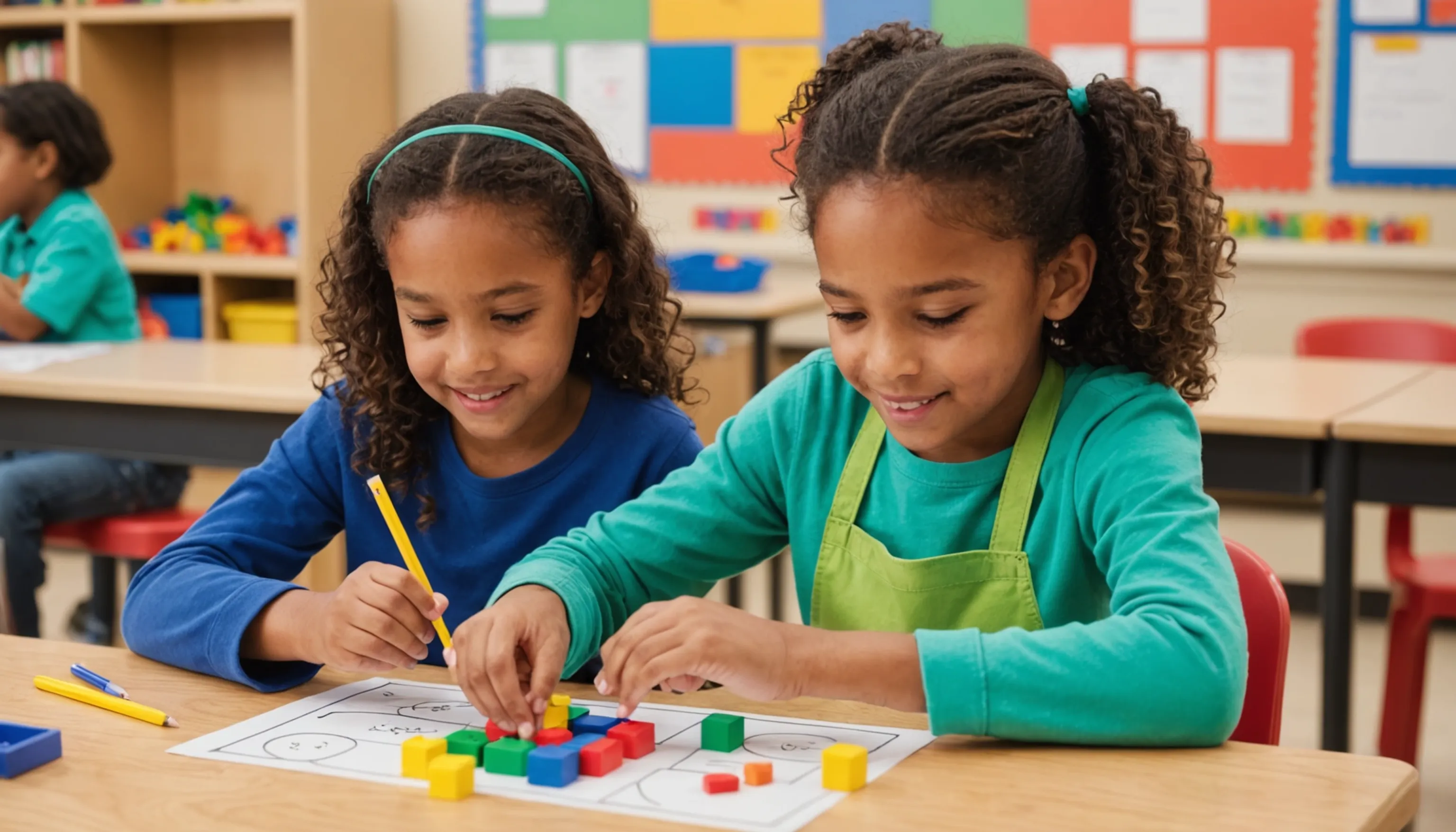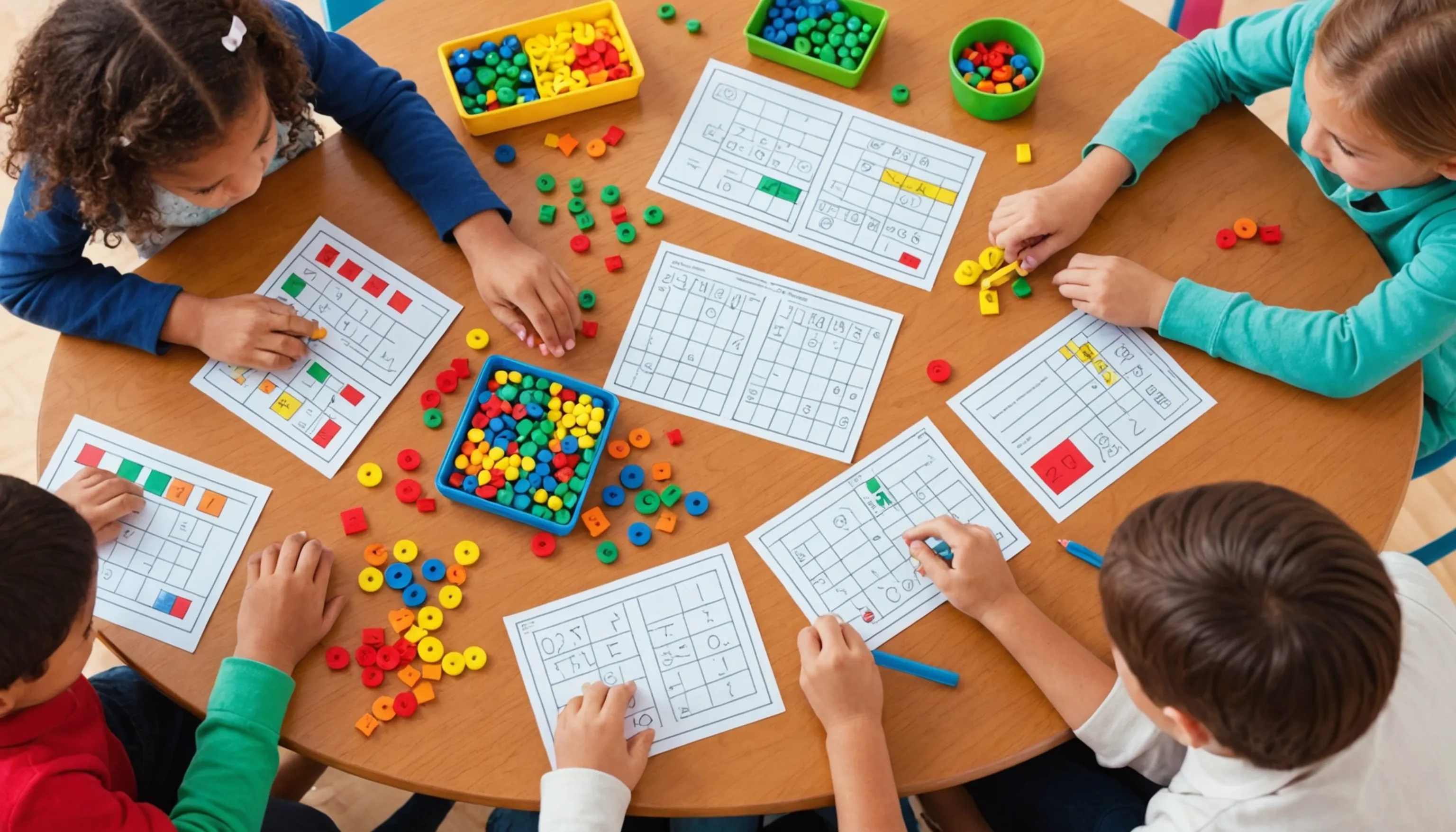How to Make Math Exciting for Kids
 HvWHenry van Wagenberg
HvWHenry van Wagenberg
Making Math Exciting for Kids: Creative Strategies
Making math exciting for kids involves using creative strategies that engage their interest and imagination. One effective approach is to use real-life applications of math, showing how it relates to everyday situations, such as shopping or cooking. Incorporating games and technology can also make learning more enjoyable, as interactive apps and online resources captivate young minds.
Additionally, encouraging collaborative learning allows students to work together, share ideas, and learn from one another. Creating a fun learning environment filled with colorful visual aids and hands-on activities can further stimulate their enthusiasm for math.
Use Real-Life Applications of Math
Using real-life applications of math is a powerful way to make the subject more relevant and exciting for kids. When students see how math applies to their daily lives, they are more likely to engage with the material. Here are some effective methods to implement this approach:
- Shopping: Involve children in grocery shopping by having them compare prices, calculate discounts, or determine the total cost of items. This not only teaches them about addition and subtraction but also about budgeting.
- Cooking: Use recipes to introduce fractions and measurements. Ask kids to double or halve a recipe, which helps them understand proportions while enjoying a delicious outcome.
- Sports: Discuss statistics related to their favorite sports. Kids can calculate averages, percentages, and even analyze player performance, making math feel more dynamic and connected to their interests.
- Travel: Plan a family trip and have kids calculate distances, estimate travel time, or convert currency if traveling abroad. This instills a sense of adventure while practicing essential math skills.
By implementing these real-life scenarios, students can grasp the importance of math in various contexts. When math is viewed as a practical tool rather than an abstract concept, it becomes more engaging and enjoyable for kids, fostering a lifelong appreciation for the subject.
Incorporate Games and Technology
Incorporating games and technology into math education can significantly enhance kids' interest and engagement. Today's children are digital natives, making technology an effective tool for learning. Here are some creative ways to use games and tech in math instruction:
- Math Apps: Utilize educational apps that focus on math skills. Many apps provide interactive challenges and rewards, making learning fun. Popular options include Prodigy Math and Khan Academy Kids, which adapt to the child’s skill level.
- Online Games: Websites like Coolmath Games or ABCya offer a variety of math games that cover different topics. These games often combine problem-solving with adventure, keeping kids engaged while they practice their skills.
- Board Games: Traditional board games can also be a great way to teach math concepts. Games like Monopoly and Yahtzee involve counting, probability, and strategy, making them both entertaining and educational.
- Virtual Reality: For a more immersive experience, consider using virtual reality (VR) applications that teach math concepts through interactive simulations. This technology allows students to visualize complex problems and see their real-world applications.
By merging games and technology with math lessons, you can create a dynamic learning environment that captures children's attention. This approach not only fosters a deeper understanding of mathematical concepts but also encourages kids to view math as a fun and engaging subject.

Encourage Collaborative Learning
Encouraging collaborative learning in math helps students develop teamwork skills while deepening their understanding of mathematical concepts. When children work together, they can share different perspectives, solve problems collectively, and support each other’s learning. Here are some effective strategies to promote collaborative learning in math:
- Group Projects: Assign group projects that require students to solve complex math problems. This encourages them to discuss their thought processes and approaches, leading to a richer understanding of the material.
- Math Circles: Create small math circles where students can gather to explore specific topics. In these settings, they can ask questions, share insights, and collaborate on solving problems, fostering a sense of community.
- Peer Teaching: Encourage students to take turns teaching each other different math concepts. This not only reinforces their own understanding but also builds communication skills as they explain their reasoning to peers.
- Collaborative Games: Incorporate math games that require teamwork. Games like Math Jeopardy or Escape Room challenges can be effective in promoting collaboration while making learning fun.
By creating an atmosphere that promotes collaborative learning, students can develop essential social skills while engaging with math in a meaningful way. This approach not only enhances their problem-solving abilities but also fosters a positive attitude towards learning, making math a subject they enjoy exploring together.
Create a Fun Learning Environment
Creating a fun learning environment is essential for making math exciting for kids. Start by decorating the classroom with vibrant colors and engaging visuals that relate to math concepts. Incorporate interactive tools like whiteboards and math games to encourage participation. Establish a positive atmosphere where mistakes are viewed as learning opportunities, helping to reduce anxiety around math. Additionally, use music and movement to break up traditional lessons; for example, math-themed songs or activities can make learning more dynamic. By fostering a lively and supportive setting, children will feel more motivated to explore and enjoy math.
Use Colorful Visual Aids
Using colorful visual aids is an effective strategy to make math more engaging and understandable for kids. Visual aids can help to simplify complex concepts, making them easier to grasp. Here are several ways to incorporate vibrant visuals into math lessons:
- Posters and Charts: Create colorful posters that illustrate key math concepts, such as fractions, multiplication tables, or geometric shapes. These can be displayed around the classroom to serve as constant visual reminders.
- Interactive Whiteboards: Utilize interactive whiteboards to present dynamic visuals. Software that allows students to manipulate shapes or graph equations can make math come alive, capturing their attention.
- Manipulatives: Use colorful manipulatives like blocks, counters, or beads. These tactile tools help students visualize math problems, particularly in areas like addition, subtraction, or fractions, making abstract concepts more concrete.
- Digital Graphics: Incorporate technology by using apps or online resources that feature animated graphics. These can illustrate math processes in a fun and engaging way, appealing to tech-savvy learners.
- Math Games: Design math games that include colorful visuals. Board games, card games, or digital games can enhance learning while keeping the atmosphere light-hearted and enjoyable.
By integrating colorful visual aids into math instruction, educators can create a stimulating learning environment that encourages exploration and enhances comprehension. This approach not only makes math more exciting but also caters to diverse learning styles, ensuring that all students benefit.

Incorporate Hands-On Activities
Incorporating hands-on activities into math lessons is an excellent way to engage kids and make learning more interactive. These activities allow students to explore mathematical concepts through tangible experiences, enhancing their understanding and retention. Here are some effective hands-on activities to consider:
- Math Centers: Set up different math stations where students can rotate through various hands-on tasks. Each center can focus on a specific concept, like measuring with rulers or using patterns with colored blocks.
- Real-Life Projects: Involve students in projects that require math skills, such as budgeting for a class event or designing a small garden. These projects provide practical applications for math concepts.
- Building Models: Encourage students to create geometric shapes using straws or clay. This activity not only solidifies their understanding of shapes but also promotes creativity.
- Cooking and Baking: Utilize cooking as a way to teach measurements and fractions. Students can follow a recipe, measuring ingredients and adjusting portions, which reinforces math skills in a fun, real-world context.
- Math Scavenger Hunts: Organize a scavenger hunt that involves solving math problems to find clues. This interactive game encourages teamwork and critical thinking while keeping the learning process exciting.
By incorporating hands-on activities into math lessons, educators create a dynamic and engaging learning environment. These experiences not only make math enjoyable but also help students develop problem-solving skills and a deeper understanding of mathematical concepts.
Celebrate Achievements in Math
Celebrating achievements in math is crucial for fostering a positive attitude toward the subject and motivating kids to continue learning. Recognizing their successes, big or small, helps build their confidence and encourages them to tackle new challenges. Here are some effective ways to celebrate math accomplishments:
- Recognition Boards: Create a bulletin board where students’ achievements can be displayed. Whether it’s completing a challenging problem or mastering a new concept, showcasing their work promotes a sense of pride.
- Math Awards: Consider giving out fun awards or certificates for milestones reached, such as “Math Whiz of the Week.” This tangible recognition reinforces their efforts.
- Class Celebrations: Organize class celebrations when the class collectively reaches a goal. This could include a small party or a fun math-themed game session.
By celebrating achievements, educators can create a supportive environment that nurtures a love for math and encourages ongoing success.
Set Up Reward Systems
Setting up reward systems in the classroom can significantly boost students' motivation and enthusiasm for math. By implementing a structured rewards program, educators can recognize students' efforts and achievements, making the learning process more enjoyable. Here are some effective strategies to create a reward system:
- Point System: Introduce a point system where students earn points for completing assignments, participating in class, or achieving specific goals. Once they accumulate a certain number of points, they can exchange them for prizes or special privileges, such as choosing the next math game or activity.
- Math Challenges: Organize math challenges where students can compete individually or in teams. Those who perform well can receive certificates, medals, or small rewards, fostering a sense of accomplishment.
- Class Rewards: Set class-wide goals for collective achievements, such as improving test scores or mastering a specific topic. When the class reaches the goal, reward them with a fun activity, such as a math-themed game day.
- Positive Reinforcement: Use verbal praise and recognition to acknowledge students’ hard work. Simple affirmations, like “Great job on that problem!” can boost their confidence and encourage them to continue striving for success.
By establishing a reward system, educators can create a positive and motivating environment that encourages students to engage with math enthusiastically. This approach helps students develop a growth mindset and fosters a love for learning.
Share Success Stories and Role Models
Sharing success stories and highlighting role models can be a powerful way to inspire students in their math journey. When kids see real-life examples of individuals who have overcome challenges and achieved success in math, it can motivate them to pursue their own goals with determination. Here are some effective ways to implement this approach:
- Guest Speakers: Invite professionals from various fields who use math in their careers, such as engineers, scientists, or mathematicians, to speak to students. Hearing their personal stories of how they overcame obstacles and achieved success can inspire students to appreciate the value of math.
- Student Spotlights: Feature students who have excelled in math, whether through a project, competition, or improvement in their skills. Sharing their stories in class or on a bulletin board can encourage peers and create a supportive community.
- Media Resources: Utilize documentaries, interviews, or articles about famous mathematicians or everyday people who have made significant contributions to math. Highlighting diverse role models can help students see themselves in those positions.
- Mentorship Programs: Establish mentorship programs where older students or community members can guide younger students in math-related subjects. This creates connections and allows students to share their experiences.
By sharing success stories and featuring role models, educators can create a culture of aspiration and resilience in the classroom. This approach not only fosters a positive attitude towards math but also encourages students to believe in their potential to achieve great things.
